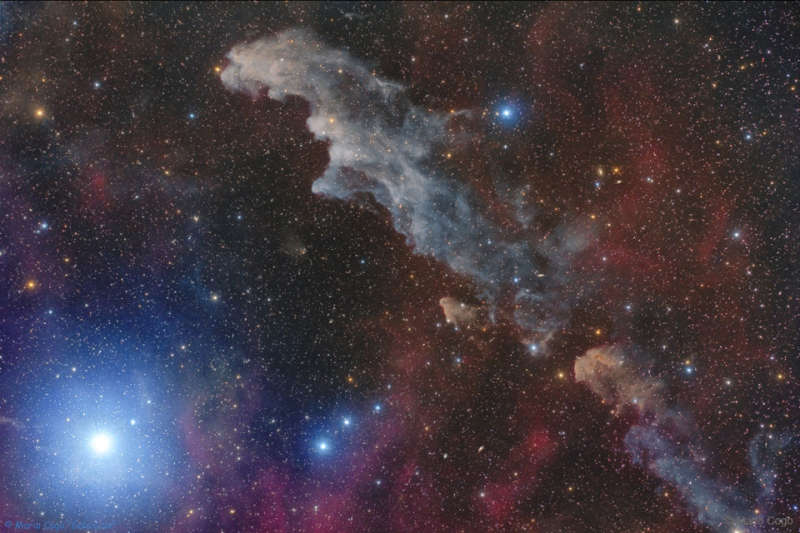Credit & Copyright: Mario Cogo
(Galax Lux)
Explanation:
By starlight this eerie visage shines in the dark,
a crooked profile evoking its popular name, the
Witch Head Nebula.
In fact, this entrancing
telescopic portrait gives the impression that
the witch has fixed her gaze on Orion's bright supergiant
star Rigel.
More formally known as
IC 2118,
the Witch Head Nebula spans about 50 light-years and
is composed of interstellar dust grains reflecting
Rigel's
starlight.
The blue color of the Witch Head Nebula and of the dust surrounding
Rigel
is caused not only by
Rigel's
intense blue starlight but because the
dust grains scatter blue light more efficiently than red.
The same
physical process causes
Earth's daytime sky to appear blue, although the scatterers in
Earth's atmosphere are molecules of
nitrogen and oxygen.
Rigel, the Witch Head Nebula,
and gas and dust that surrounds them lie about 800 light-years away.
Open Science:
Browse 1,600+ codes in the Astrophysics Source Code Library
1999 2000 2001 2002 2003 2004 2005 2006 2007 2008 2009 2010 2011 2012 2013 2014 2015 2016 2017 2018 2019 2020 2021 2022 2023 2024 2025 |
Yanvar' Fevral' Mart Aprel' Mai Iyun' Iyul' Avgust Sentyabr' Oktyabr' Noyabr' Dekabr' |
NASA Web Site Statements, Warnings, and Disclaimers
NASA Official: Jay Norris. Specific rights apply.
A service of: LHEA at NASA / GSFC
& Michigan Tech. U.
|
Publikacii s klyuchevymi slovami:
Rigel - Witch Head Nebula - Rigel' - tumannost' Golova Ved'my
Publikacii so slovami: Rigel - Witch Head Nebula - Rigel' - tumannost' Golova Ved'my | |
Sm. takzhe:
Vse publikacii na tu zhe temu >> | |
